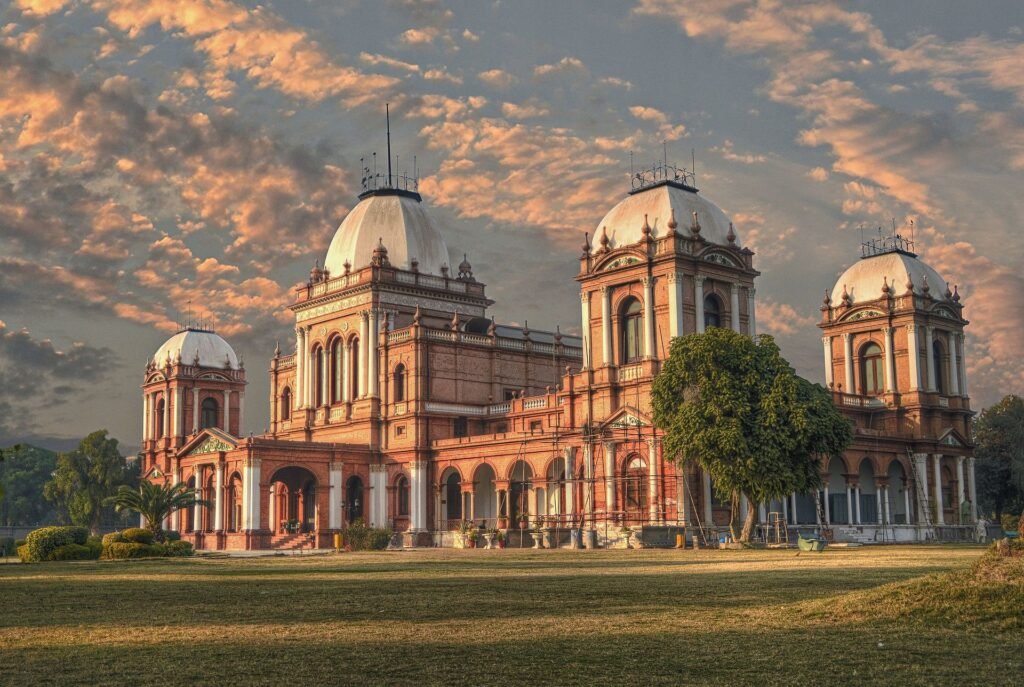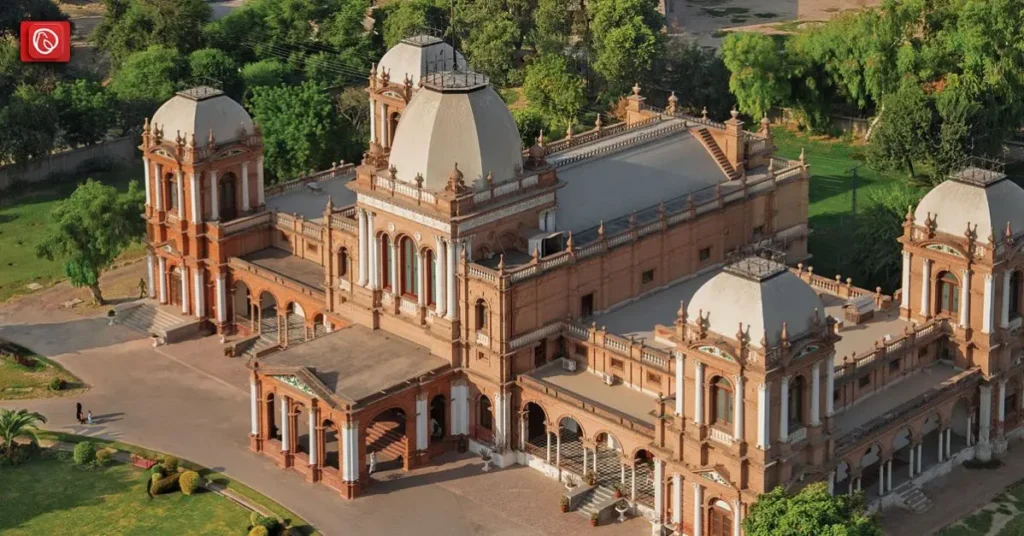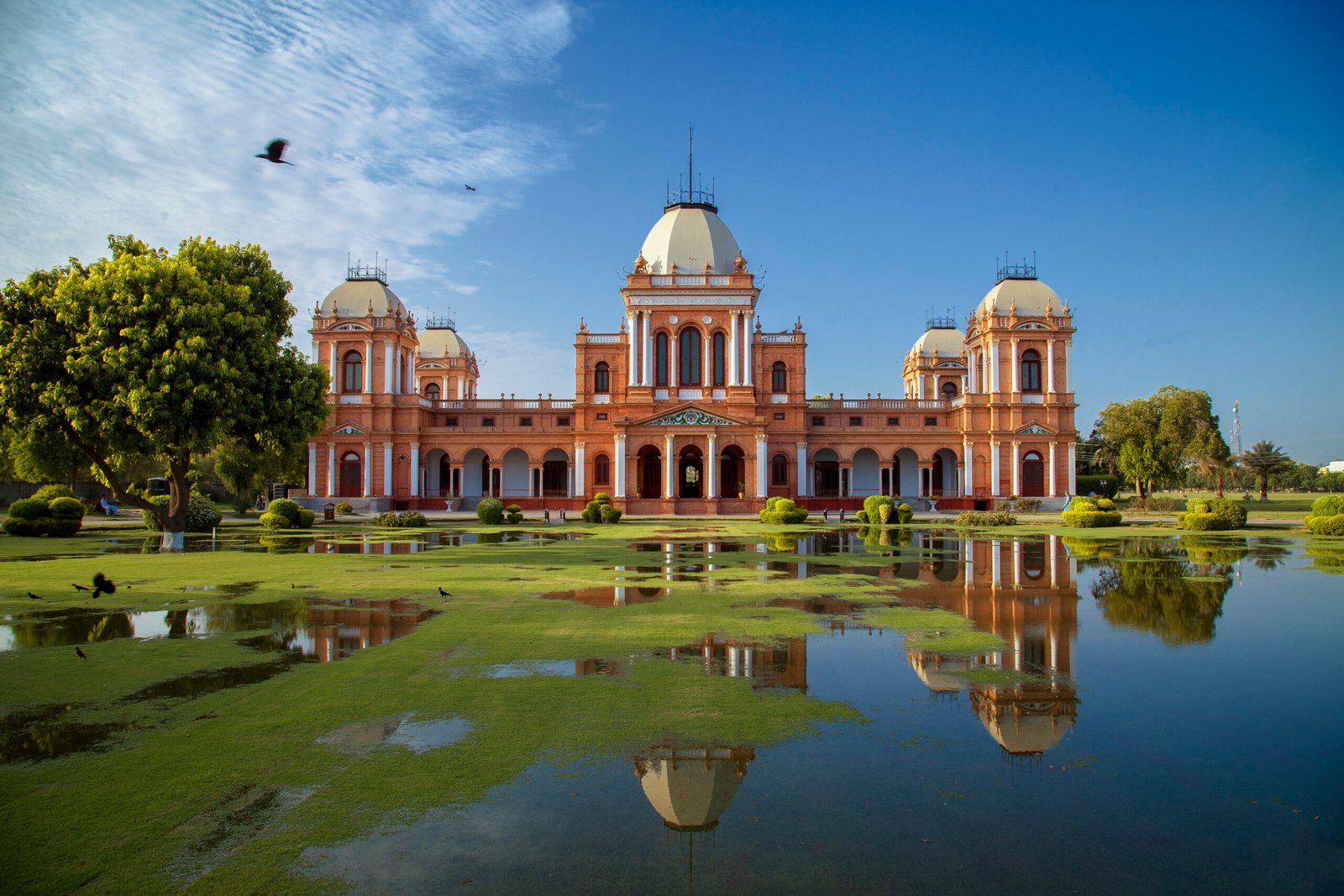Noor Mahal is amongst those amazing, grand, and historic palaces standing in Bahawalpur, Pakistan. Each brick speaks volumes of wonder and the vast expertise of the 19th century; it tells a story of greatness that was pursued since times past and which had most of the Mughal and European architectures narrated inside their elaborative walls. It aims to discourse on history, associated with it, its importance from an architectural point of view, and a place which Noor Mahal occupies in the rich cultural heritage of this country.
Noor Mahal Bahawalpur is an imposing edifice that used to be a residence of Nawab of Bahawalpur till 1955 when it was dissolved by the Pakistan government. As of present times, Noor Mahal belongs to the Pakistan Army. Through it, it can have it put to use for training purposes meant for army officers if they want to. Opened inside this mansion as a museum to the general public, the now-defunct museum must be all worth visiting when one is anywhere near the vicinity.

Bahawalpur is a southern city of Pakistan. Noor Mahal falls within this place. Paying a visit to this place, Bahawalpur Airport is the nearest airport. Actually, it is an airstrip lying some few kilometres away from the palace. Public buses and trains running between Bahawalpur City and other cities in Pakistan ply at the same place. Thus, reaching the palace using public transport would be very easy.
Architectural Design and Influences
From Mughal to European essences, architectural inspiration was personified in Noor Mahal. Be it the Mughal arch or each minute Victorian detail, there is unique aesthetic beauty mirrored in full grandeur picked from Mughal architecture and modernity taken from European inspirations in the design.
Details of Construction and Era
Noor Mahal was initiated in 1872 and it was completed by 1875. Construction of the palace was given altogether a new dimension as the main building element chosen was red sandstone since it would provide it with more regional appearance. The less information available in the process of its construction depicts excessive carvings and majesties where the building is laid out.
Architectural Features of Noor Mahal
Exterior Design
The projecting balconies outside reveal the carved balconies replete with decorative motifs. Large major features are more than the arched windows and balconies that give the continuous view of the landscape outside. Red sandstone lends an uncanny fettle and a kingly touch.
Interior Elegance
From inside, Noor Mahal is very glamorous and nicely decorated. There are striking patterns on the ceiling of this palace, which bear huge chandeliers. Such chandeliers bear costly decorations. Its walls are nicely decorated with frescoes and good looking wall paintings manifesting historical and cultural themes.
Gardens and surroundings
Noor Mahal is within a compound that has well-maintained and beautiful gardens adding four folds to the beauty of surroundings. It won’t be wrong to say that in itself, gardens have very well maintained fountains and flower beds together with a reasonable number of pathways attribute immensely beautiful surroundings to surroundings.
Historical Importance Noor Mahal
Role during British Era
In the British era, the mansion also served as a residential place for Noor Mahal, Nawab, and his family. That mansion was one other reason for Nawab’s prestige and richness. The mansion used to be dominating during the then prevailing political and social situation. So this is one of those places where lots of historic moments and events used to occur as well.
Cultural Impact
Noor Mahal stands tall for architectural and cultural wonders. It depicts Bahawalpur cultural heritage wherein the remembrance of the historic importance of the region is enriched. Today, the Palace stands as a Class-One tourist attraction and attracts visitors from all parts of the world.
Preservation and Restoration
It was preserved and restored with a view to retaining much of the historic value of the premises. It is now under the preview of the Department of Archaeology and Museums so that the cultural and architectural treasure is brought alive for the future generation to come and relish.

Noor Mahal in Modern Times
Presently a Tourist Attraction
Of late, it has turned out to be a hot tourist destination as Noor Mahal came under the radar of all those interested in the historical and architectural importance of this place. History and the legends associated with guided tours explain it all.
Cultural Events and Activities
The palace at times organises cultural events and exhibitions in traditional art and crafts aiming to expose the rich cultural heritage of the region.
Social Value
The Noor Mahal has been educative teaching quite a number of lessons touching on the aspects of history, architecture as well as art. Indeed almost all the educational institutions plan excursions to the palace for better learning by the learners of the historical and also the cultural subjects.
Conclusion
Noor Mahal epitomizes historic brilliance combined with architectural brilliance. It has been defined as one of the greater cultural landmarks, carrying a great history and beautiful architectural features. Besides depicting the grandeur of the Nawabi era, this palace keeps mesmerizing the visitors with its eternal beauty. It would always remain a standing testimonial to the glorious past of Bahawalpur heritage. Visitor Experience
Noor Mahal operates from 9 am to 5 pm. Tourism into this fort is absolutely free. Inside this palace, a museum is present which preserves many remains of the time when the place was actually used as a royal residence. The premises are available with gardens and a mosque as well. Permission is given to visitors to have a tour of the main floor of Noor Mahal that contains a number of heavily ornamented rooms. The climax of the tour forms at the famous Sheesh Mahal or ‘Mirror Palace’. The whole small room is lined up with mirrored glass on its walls and ceiling. Noor Mahal is held in great standing among magnificent and interesting buildings of Pakistan, and that is something which one should not miss if he gets an opportunity to visit.




